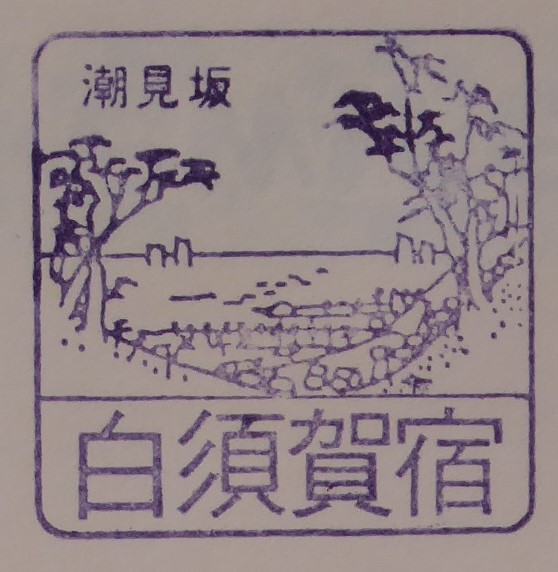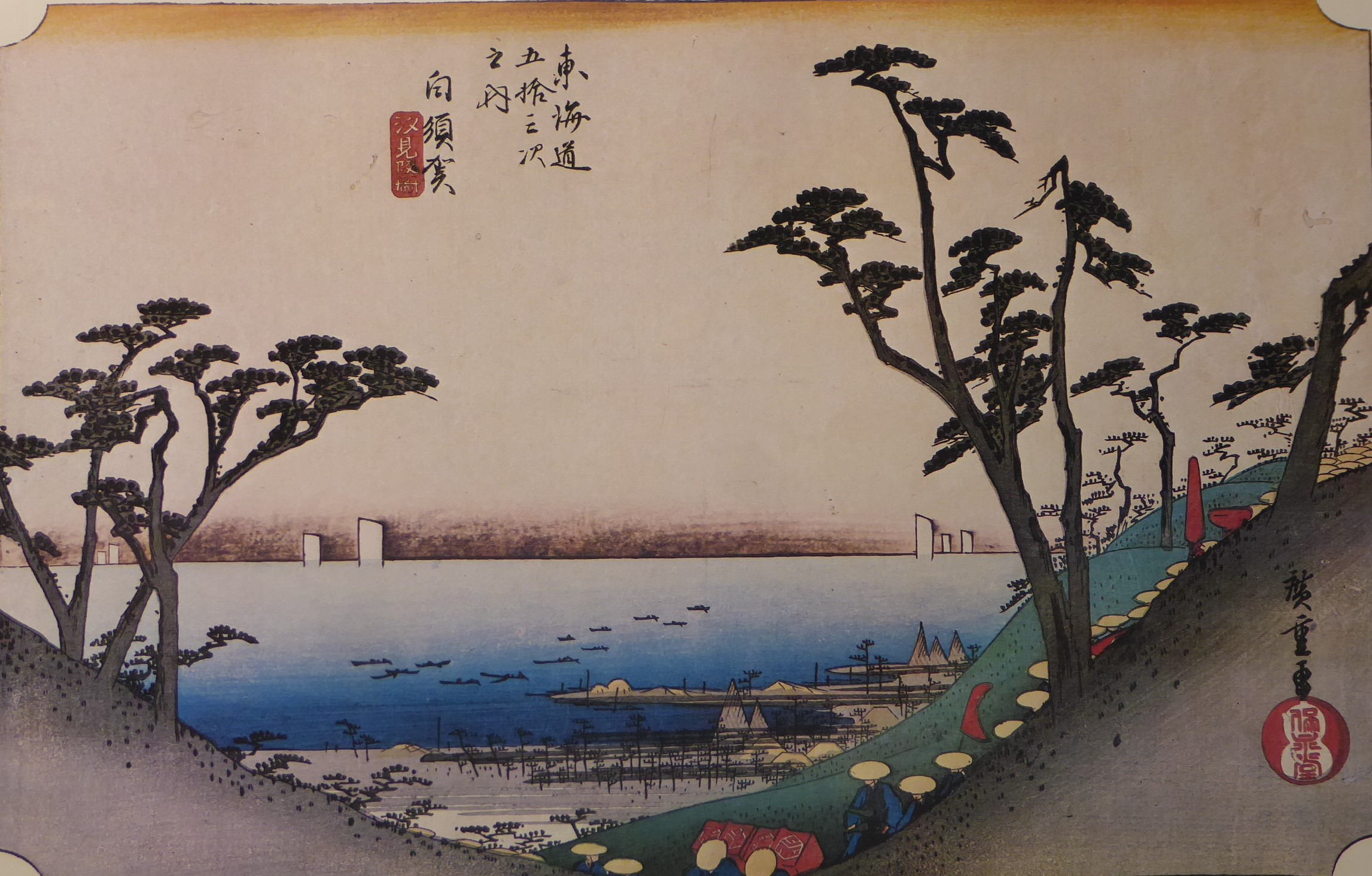Explanation of the Fifty-three Stations of the Tokaido 33 Shirasuka
5.8km from Futagawa to Shirasuka, 34°41′19″N 137°30′03″E
Shirasuka is the 32nd post town on the Fifty-three Stations of the Tokaido.
It is the westernmost post town in the Totomi Province, and the westernmost post town in Shizuoka Prefecture among the current 47 prefectures.
The kashiwamochi (Japanese oak leaf cakes) sold in Kajuku Sakai to the west are famous as a specialty of Shirasuka.
Shirasuka was originally located near the coast.
It was severely damaged by the Hoei earthquake and tsunami that occurred in 1707.
It was later moved to higher ground above Shiomizaka.
The length of the town from east to west is 14 cho 19 ken (about 1.5 km).
The number of people and houses in the inns, including Kajuku Sakai-juku Village, was 2,704 people and 613 houses.
There was one honjin, one waki-honjin, and 27 inns, making it a medium-sized inn town.
When the Tokaido Main Line was built, the gradient of Shiomizaka, which runs from Arai-juku in the east to Shirasuka-juku, became an obstacle for steam locomotives.
The town stopped developing when the line was routed via Washizu on the shores of Lake Hamana.
The town retains traces of the Edo period, such as old houses with latticed doors and narrow houses.
There is “On-yado Shirasuka” which was established to commemorate 400 years since the establishment of the Tokaido post station.
On-yado Shirasuka has historical materials such as the history of Shirasuka post station, ukiyo-e, waka poetry, and travelogues.
There are exhibits such as cultural panels and dioramas.
After the post station was abolished, Shirasuka town was established in 1889, and was incorporated into Kosai town in 1955.
It is now Shirasuka, Kosai City, Shizuoka Prefecture.
① “Hoeido version”
On the way to Shirasuka post station, you can see a magnificent view of the Enshu Nada Sea from Shiomizaka.
The lower half in the foreground is carved out in a semicircle to depict the hills.
This expresses the steep slope of Shiomizaka.
The slope in the back is called “daimyo” The procession moves forward.
In the distance, a straight horizon line is drawn.
Seven sailing ships are floating on the sea.
Among the procession’s luggage are two narrow red boxes.
The narrow boxes have a pattern representing Hiroshige’s “Hiro.”
The narrow boxes express Hiroshige’s message.
② “Gyousyo version”
From Shiomi-zaka, you can see the magnificent view of the Enshu Nada Sea.
A traveler is enjoying this magnificent view while taking a break.
③ “Reisho script version”
This is the first place you can see the sea on your way from Kyoto to Edo.
It also expresses the steep slope of Shiomi-zaka and the narrowness of the road.
④ “Hokusai version”
A traveler is looking at the magnificent view of the Enshu Nada Sea from the high ground of Shiomi-zaka.
⑤ “Travel image”
A signboard for Shirasuka-juku.
⑥ “Stamp image”
I forgot if the stamp for Shirasuka-juku was a roadside station or not.
Hoeido version
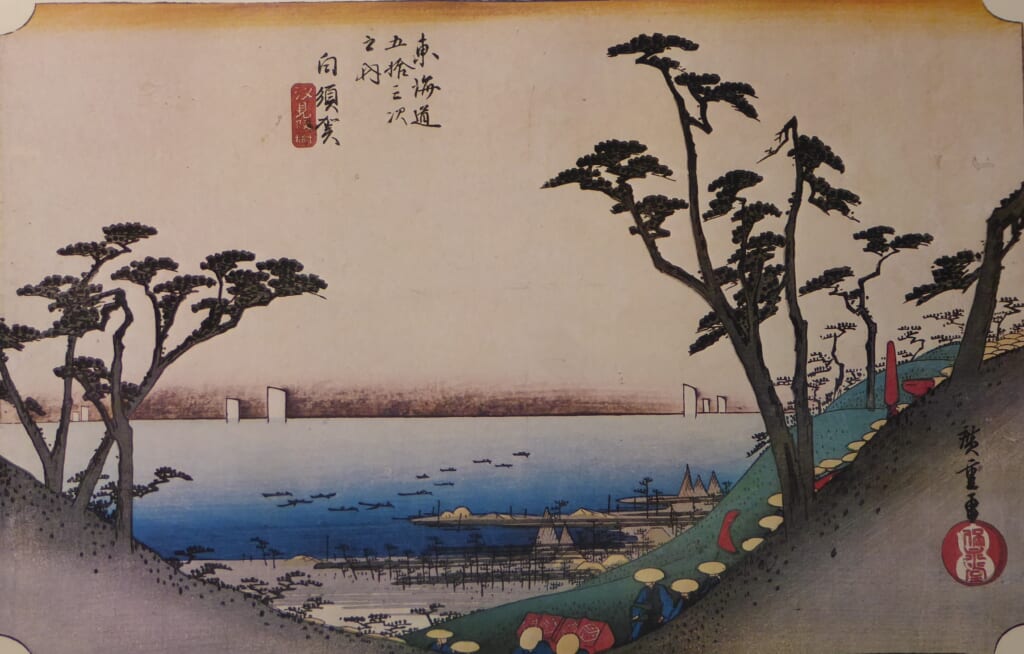
Gyousyo version
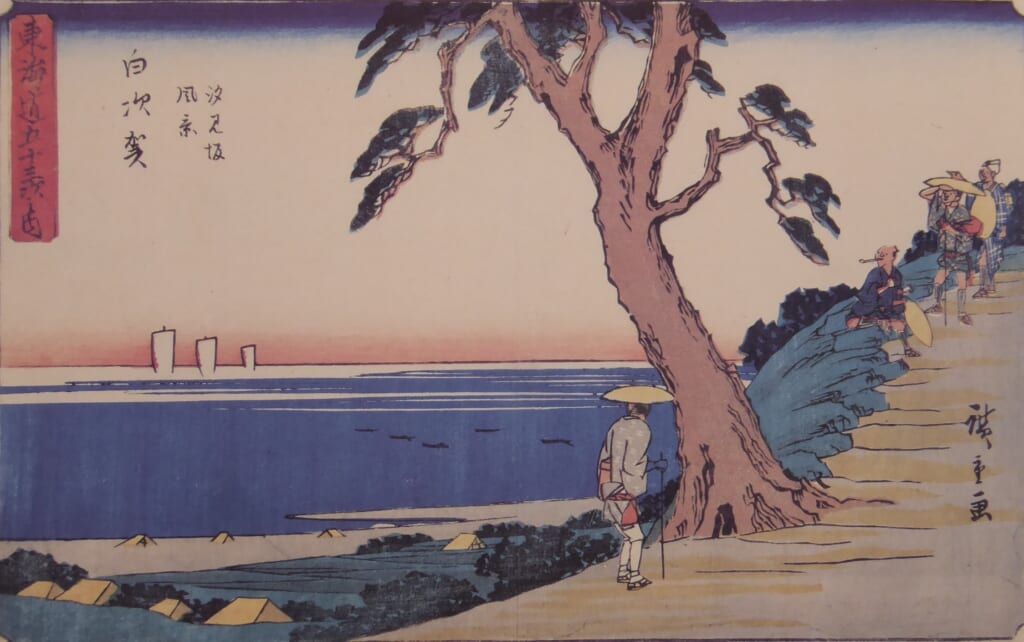
Reisho version
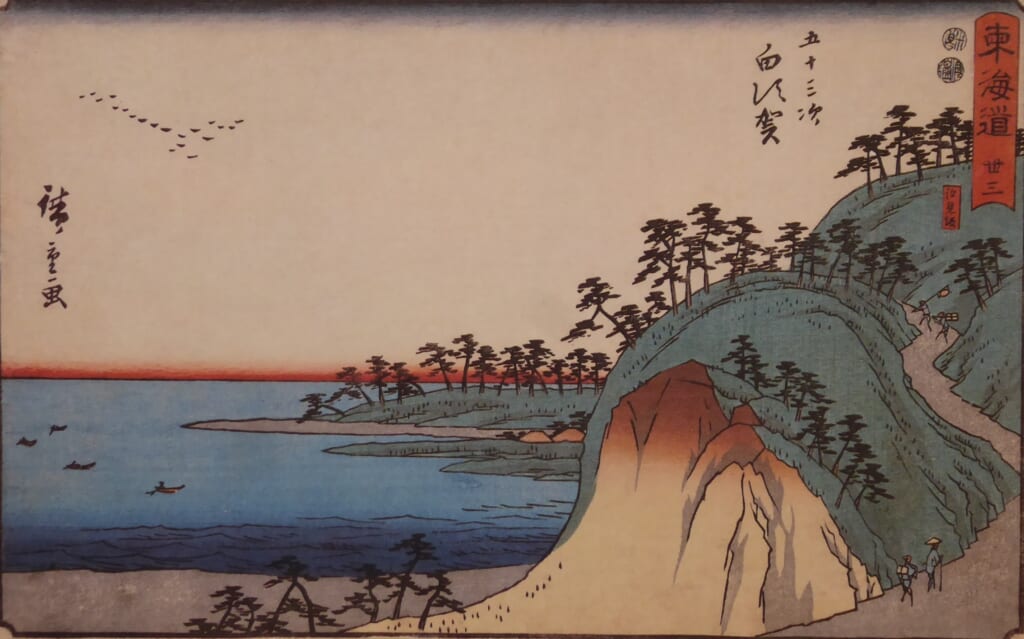
Hokusai version
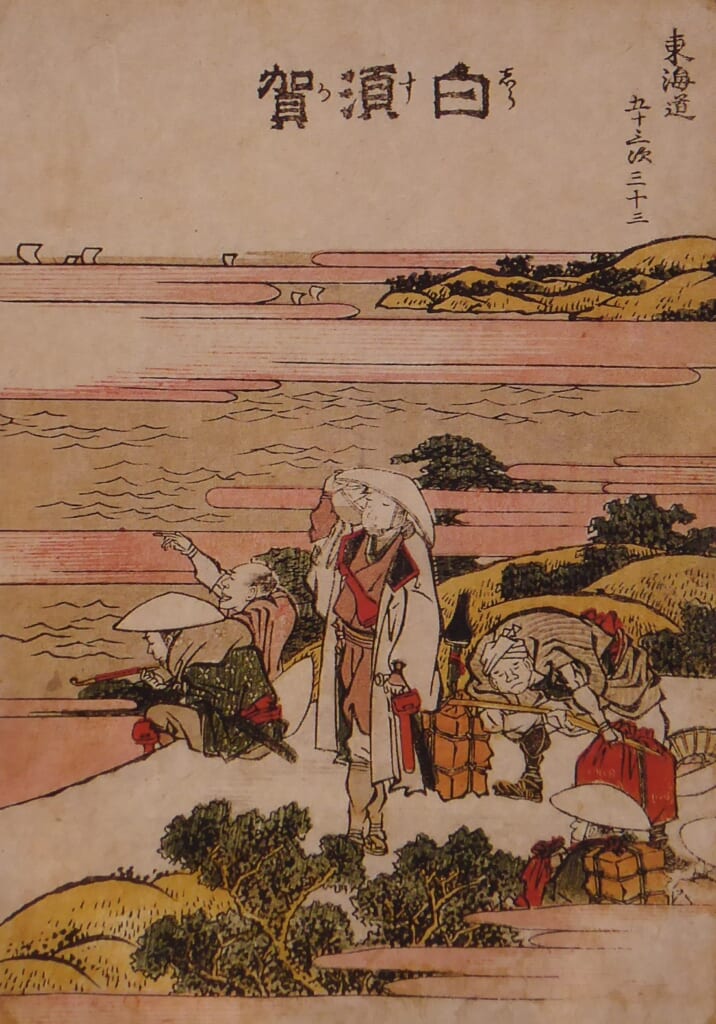
Travel image
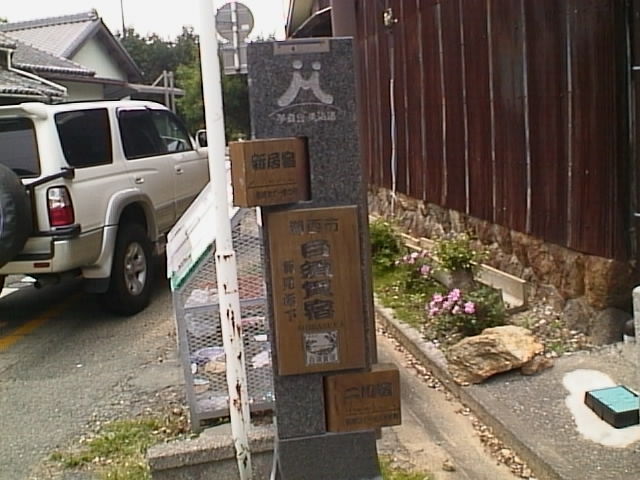
Stamp image
